Cashing in on collectibles: A guide to getting started
Sign up now: Get ST's newsletters delivered to your inbox
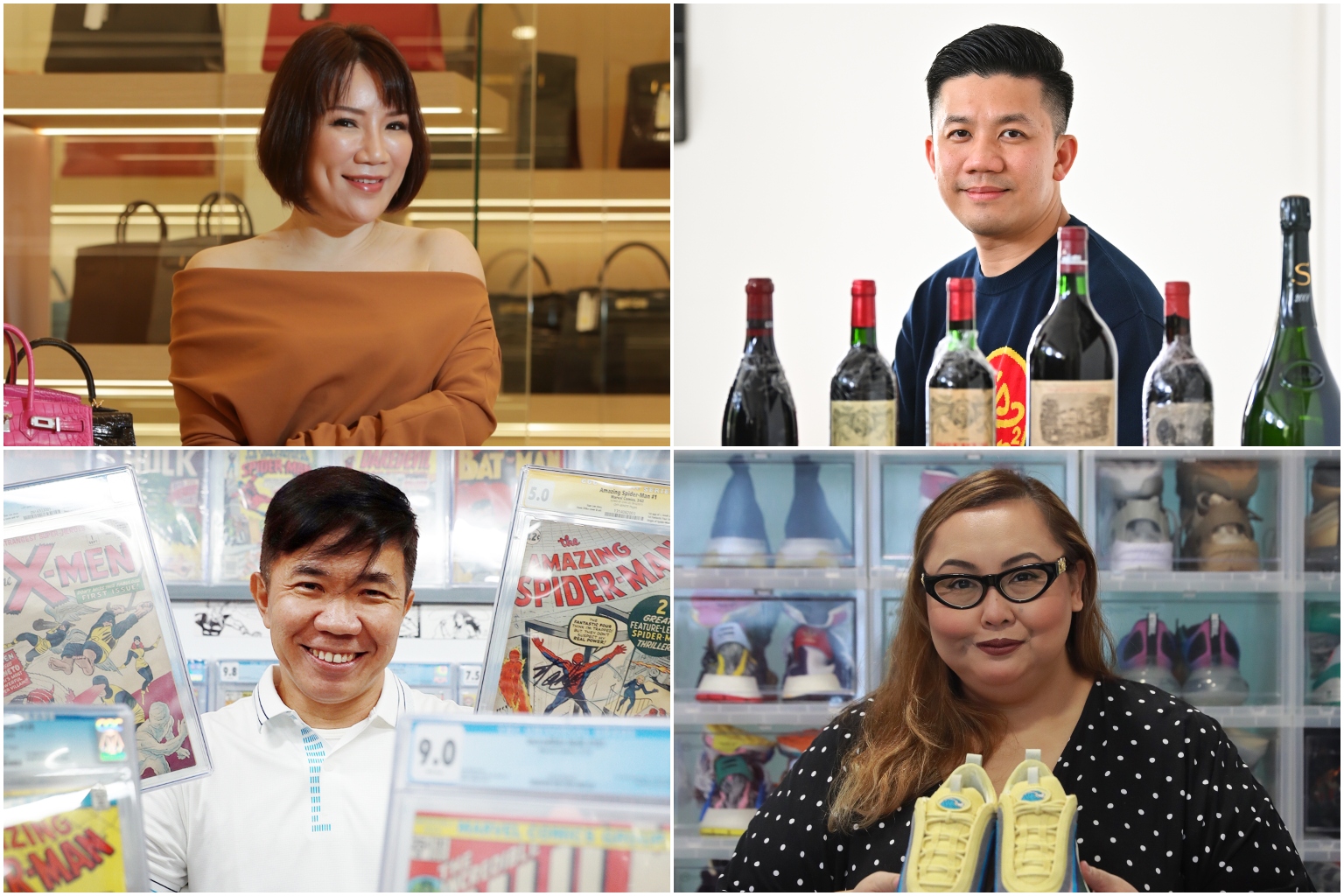
PHOTOS: GIN TAY, LIM YAOHUI, JASON QUAH
Follow topic:
SINGAPORE - Buying stocks and shares can fetch a pretty penny for an investor, but what about items that people collect for fun and also appreciate in value over the years? Collecting might start as a hobby but it can become a worthy investment vehicle for the passionate soul.
Investors have found themselves rocked by the volatile stock market during the pandemic over the past year.
But tangible assets - wine, cars and watches - have performed reassuringly well over the past 12 months to mid-2021, according to a Knight Frank luxury investment report.
Wine has even risen in value during this pandemic times. The Knight Frank Fine Wine Icons Index, compiled for the report by wine collection management platform and trading community Wine Owners, rose 13 per cent.
Wine Owners founder Nick Martin said: "Wine is doing really well, not going crazy, but growing nicely. There are no signs of over exuberance."
For example, red wines such as Bordeaux have been doing well this year, he said, whereas Burgundy has been taking a breather.
Rare and collectible cars are also growing in value, with indices in an all-time high territory, the report said.
Some of this year's standout auction sales include a McLaren F1 that fetched almost US$20 million, as well as the record US$2.9 million purchase of a US-Spec Ferrari F40.
Besides those with race pedigrees, others are also raking in big bucks among younger buyers, with a Lamborghini Countach achieving US$720,000.
But such alternative investments are also not without risk, and certainly not for the faint-hearted, experts said.
"From a financial angle, valuation can be subjective - value is literally in the eyes of the beholder," National University of Singapore business professor Lawrence Loh noted.
Unlike shares, these items are also not traded on a regulated market, but often between buyers, sellers and intermediaries, he added. This means if things go awry, there is little way to seek recourse apart from litigation.
DBS head of financial planning literacy Lorna Tan also said that there is no authority stabilising prices nor protecting consumers of collectibles.
"One of the major risks of collectables is their lack of liquidity. There is no price transparency, which increases the risk for new investors who may not be familiar with these collectibles," added Ms Tan Siew Lee, OCBC's head of wealth management Singapore.
"The demand for collectibles can be small, so hunting for a good deal or even selling the item may take a long time. Given that it is an unregulated market, it poses a risk to investors looking to ensure that the collectable item is authentic."
Additionally, collectors have to be prepared for the higher cost of some of these investments, which includes paying for maintenance and insurance to protect the assets, she said.
DBS' Ms Tan added: "Perhaps, it is prudent to view collectibles more as a hobby than solely for financial gain.
"By doing so, investors collect the items out of passion and enjoyment while they grow in their relationships with other collectors and people with common interests. So, even if the items don't appreciate much in value, they still bring you joy."
How investible are these items over a year or 10 years?
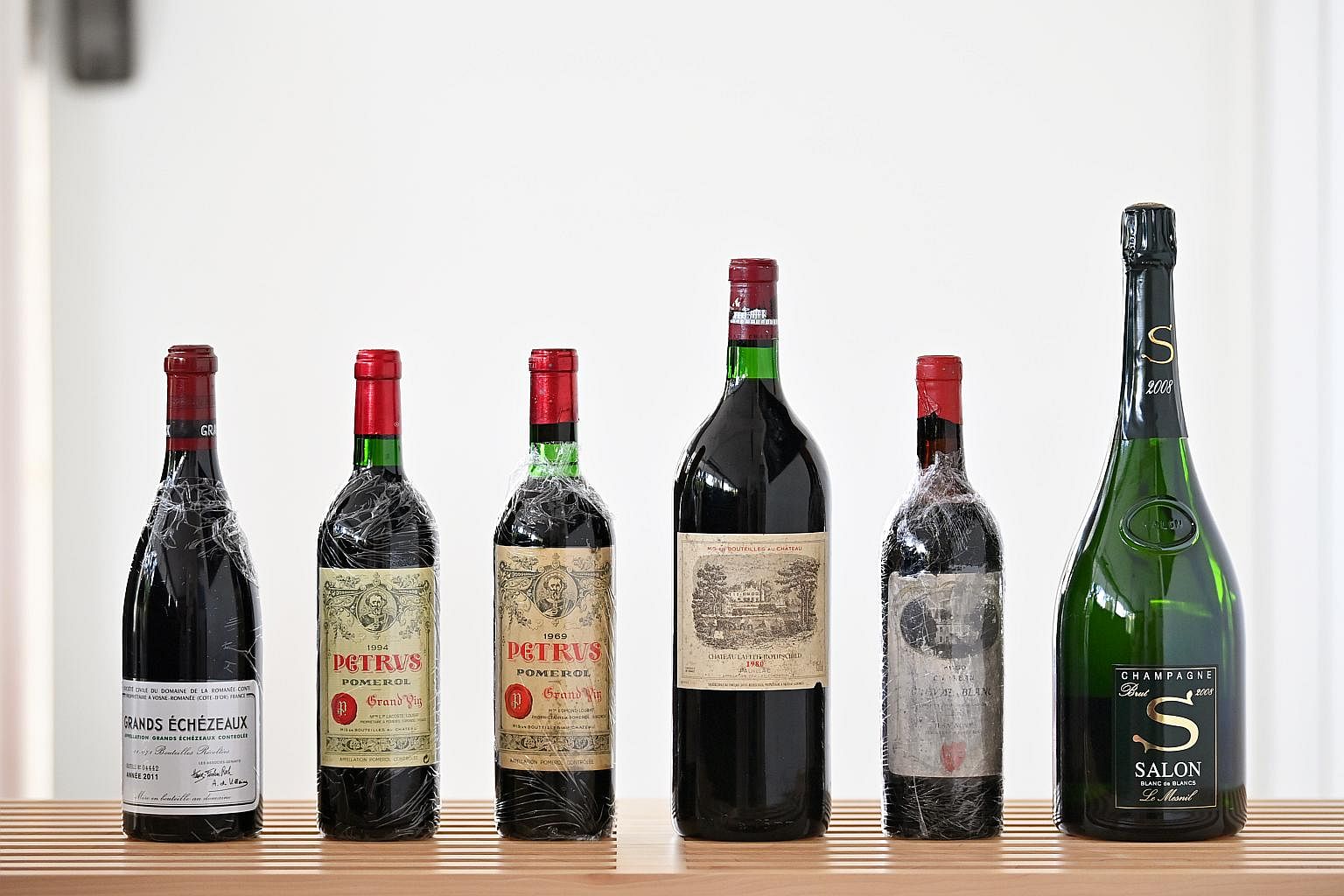
So what makes a bottle of wine more than a good tipple, and becomes a worthy investment instead?
It's about rarity and the limited nature of the item, collectors say.
But besides these traditional collectible items, appetite is growing for other assets, such as street art.
There is a sexy appeal in the rough grit, yet raw emotions in street art like Banksy's, that cast the urban environment in a new light, while offering biting social commentary and satire.
"Mainstream investors are only just beginning to fully cotton on to the financial potential of contemporary street art, and artists' prices are rising accordingly," said Ms Luci Stephens, Art Specialist at leading gallery group Clarendon Fine Art.
This graphic of the Knight Frank Luxury Investment Index shows how the value of various assets, ranging from watches to rare whiskey and art, has changed over the past 12 months to June 2021.
Wine has taken the top spot this year, jumping some 13 per cent in value in the 12 months to June, in the index which compiles a weighted average of the 10 asset classes it tracks.
Watches came second on the index, appreciating 5 per cent, while cars grew in value by 4 per cent.
Below that is the same index, but showing how the value of the assets has changed over the last 10 years. Over the last decade, rare whiskey took the top spot, jumping 483 per cent in value.
These trends are more or less in line with what Singapore collectors invest in, which are watches first, followed by art and wine, and jewellery, said Mr Andrew Shirley, editor of the Knight Frank Wealth Report.
Indeed, Singapore has no shortage of serious collectors.. Although their collections might not emerge as the most common types of investments like stocks and shares, some have managed to turn their wines, artworks and even sneakers into little pots of gold.
Here are some savvy investors whose collections have grown in value.
Lightning in a wine bottle
Meet Mr Kevin Lim, 41, who has about 500 bottles of wine. His entire collection is worth around $400,000.
They feature names such as Pètrus, Lafite, Mouton, Latour, Margaux, Haut Brion, Cheval Blanc, Romanee Conti, Domaine Leroy, Domaine Georges Roumier, Domaine Comte Georges de Vogüé, Sine Qua Non, Realm Cellars and Scarecrow.
"My collection comprises mainly French first growth Bordeaux, with some super second Bordeaux," he said. His favourites are mainly Burgundy wines.
Super second Bordeaux wines are second growth ones that are almost at the level of quality as the first growths, but are not as expensive as first growths.
Investing in a proper wine cellar or rack is important, Mr Lim added. Here, he shows how he keeps his bottles in tip top condition on a wine rack with regulated temperatures.
Why does Mr Lim, ERA Singapore chief agency director, collect wine?
"I was born in 1980, so I tend to collect a lot of 1980 vintage and I collect mainly French wines. To me, a bottle of wine is like a time capsule, a particular moment in time is captured in the bottle," he said.
He did not start collecting wines to make money, but simply out of personal interest.
"France produces some of the greatest wines and I enjoy learning about the wine origins from the region and its vast history," he said.
To him, wine is also about shared memories.
"Prior to the pandemic, I used to organise regular gatherings with my teammates whom I work closely with. It's a big team as I have over 2,800 agents under my real estate group," he said.
"During gatherings like these and on special occasions, I like to bring out vintages related to their birth year, special events, or a random vintage, as it creates fun and engaging conversations. We will look back on all the good and meaningful memories."
The bottles may be expensive, but Mr Lim is not above popping the cork on one to share with fellow wine connoisseurs.
"Sometimes we hold a dinner and everyone brings a favourite bottle of theirs. It is not just about the price. Usually good wines are pricey, but that is not always the case and it also depends on personal taste," he said.
Mr Lim, who is married to a homemaker, also bought wines that were made in 2017, which is when his four-year-old twins were born, so the bottles can mature along with them.
Let's take a look at his favourite picks and how much each bottle is worth now. Some bottles are cling wrapped to protect the labels from being scratched or damaged.
BOTTLE 1: 1950 Cheval Blanc. Bought for $2,000, now estimated to be worth $4,000.
BOTTLE 2: 1980 Chateau Lafite Rothschild Magnum. Bought for $1,600 in 2019, now estimated to be worth $4,000.
BOTTLE 3: 2008 Salon Cuvee 'S' Le Mesnil Blanc de Blancs Champagne. Bought for $2,500, now estimated to be worth $8,000.
BOTTLE 4: 2011 Domaine de la Romanée-Conti Grands-Echezeaux Grand Cru. Bought for $2,500, now estimated to be worth $5,000.
BOTTLES 5 & 6: (Left)1994 Pétrus Pomerol. Bought for $2,300, now estimated to be worth $5,000. The 1969 Pétrus Pomerol was bought for $2,300 and is now estimated to be worth $6,000.
Tips for collecting wine
1. Always start by collecting the type of wines that you like to drink. Research and find out about the vintage or producer as these will affect the quality of the wine. A good producer is able to produce good wines even during difficult years.
2. Look beyond the price tags and buy within your budget. Not all great wines are expensive and vice versa, not all expensive wines are worth collecting.
3. Due to the warm and humid weather in Singapore, it's important to invest in a proper wine cellar to store the wines.
Bags that hold value
Mrs Florence Low, 49, is an avid handbag collector who has also turned her passion into a business.
Her business, LuxLexicon, is a luxury reseller of designer handbags like the Hermes Birkin.
She has more than 100 handbags in her collection, with a combined worth of more than $2 million. They are stored at LuxLexicon, which has just expanded to a 2,700 sq ft showroom at Palais Renaissance.
Mrs Low gives a quick tour of her colourful collection, which concentrates on Hermes and Chanel bags.
A luxury handbag can be a good look at parties, weddings and functions. But they carry more than just a mobile phone and wallet.
These bags can hold great value, according to Mrs Low who turned her luxury handbag passion into a business, with a focus on Hermes and Chanel handbags.
She has been collecting handbags since 2009, but only expanded her investment in them in 2016, when she founded LuxLexicon. She is married with two teenage children aged 13 and 14.
"That was when I realised luxury handbags make a great alternative asset class. The return on investment is healthy. Plus, they are sexier than bonds and require less maintenance than properties!"
Her handbags have fetched an average of 20 per cent returns annually for the past five years, with last year being a remarkable year for such investors.
"Revenge spending post-lockdowns everywhere saw a strong demand for luxury bags, and luxury retail weathered the pandemic much better than other businesses, so it was no surprise I had my best year last year," she shared.
"In hindsight, I should have held on to those bags as prices continue to climb on the back of a strong demand, lower production as brand owners experienced disrupted production as a result of lockdowns, and the world's insatiable thirst for luxury goods."
Here are her top picks, which are all bags from top-tier luxury brand Hermes. Hermes bags are made in limited quantities, which make them great value for a collector, she said.
BAG 1: Hermes Rose Shocking Matte Alligator Birkin 25. Bought (store price) for $63,000, now worth an estimated S$110,000.
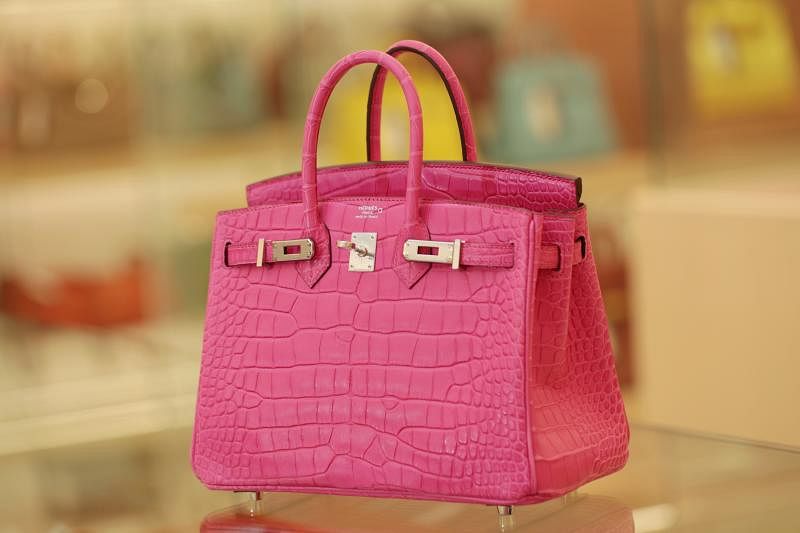
BAG 2: Hermes Craie and Etoupe Epsom Kelly 20. Bought (store price) for $11,800, now worth an estimated S$40,000.
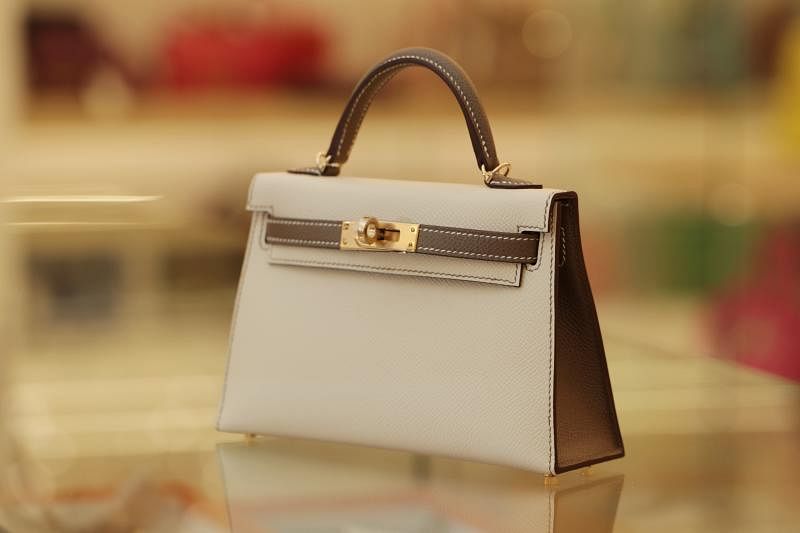
BAG 3: Hermes Himalayan Kelly 25. Bought (store price) for $115,000, worth an estimated US$438,000.
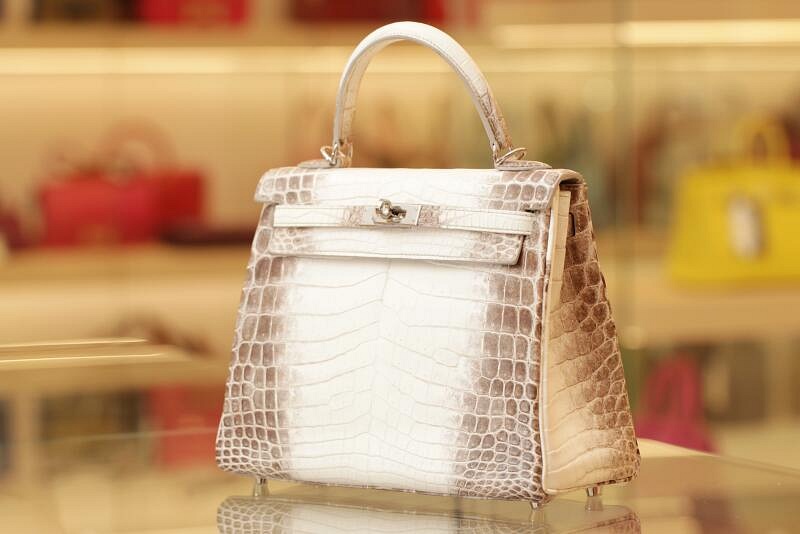
BAG 4: Hermes Black Alligator Kelly 25. Bought (store price) for $57,000, worth $90,000.

BAG 5: Hermes Rouge de Coeur Kelly Picnic. Bought (store price) for $45,000, worth an estimated $80,000.
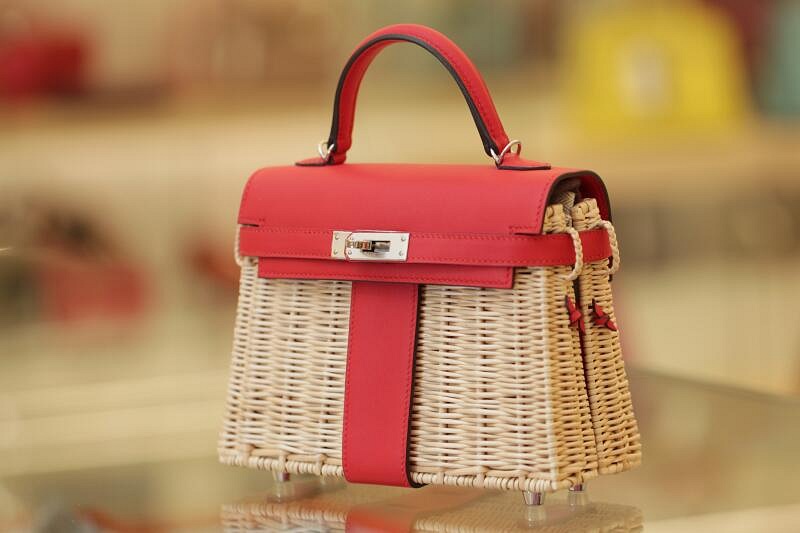
Tips for collecting handbags
1. Focus on brands that are limited in production - whether it is because they are part of a limited release or simply more expensive than their peers. For that reason, Hermes is a clear winner because it makes a limited number of Birkin and Kelly handbags and it exercises tight control over the distribution.
2. You can buy the bags from the brand boutiques. Make friends with the sales associates to make sure they give you priority access to choice picks. Make sure to invest in that relationship. Expand your collection by buying from friends or trusted resale platforms.
3. Where to store the bags? I store them in a room with a dehumidifier. Never subject your luxury handbags to harsh lighting, high temperature and humidity.
Artistic flair
Mr Kevin Lim's landed property in the East Coast area does not just have a wine rack, but also boasts an impressive art collection.
He has over 60 pieces of artwork and large collectible figurines, worth about $300,000 in all.
Here, he stands with an artwork by local pioneer artist and lauded "living legend" Lim Tze Peng, called 海阔天空 "Boundless Horizon", signed off with 百岁林子平 "100 years old", bought for about $13,000.
Art pieces, sculptures and figurines are not just to be admired for their beauty. For Mr Lim, they are all reflections of the self, and together, paint a picture of who he is.
"My house is my brain, basically. It is a reflection of my style, my characteristics and all my toys, arts, sculptures and furniture give me inspiration for my business," he said.
"So many different things make up Kevin Lim. I am not one-dimensional. That's the same way I think about buying and collecting works of art."
He does not intend to sell any of the pieces in his collection because he said he collects art not to make money.
"For me, it's not about buying the most expensive piece or which artwork will build up the most value - it's about partaking in creative culture."
Mr Lim has also gone to great effort to import favourite pieces from overseas, such as his Astroboy figure. He had to hunt it down through connections with fellow collectors and get it shipped from Japan to Hong Kong, then to Singapore.
"It is really about visiting galleries and talking to people there, so when they realise you also really like art, you can trust each other," he said.
Here are some of his prized art pieces, including KAWS figurines, which Mr Lim started collecting before they became famous, he said.
ARTWORK 1: Full collection of KAWS Dissected Companion X Medicom Bearbrick by Brian Donnelly. Bought for approximately $2,000, worth an estimated $30,000.

ARTWORK 2: Boundless Horizon by Lim Tze Peng. Bought for approximately $13,000.

ARTWORK 3: Astroboy by Osamu Tezuka. Bought for $4,000, worth an estimated $12,000.
ARTWORK 4: Lion in the Wind 2 by Laurent Baheux. Bought for $7,000.
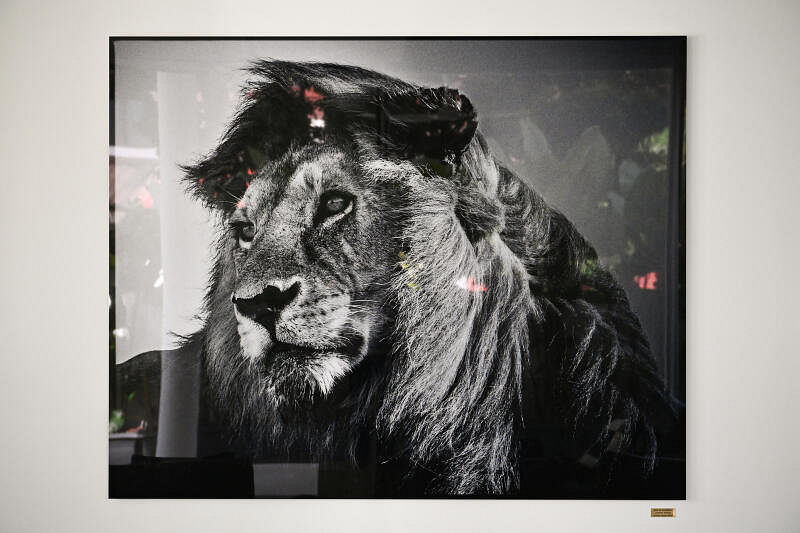
ARTWORK 5: KAWS Original Fake 6th Anniversary X Medicom Bearbrick by Brian Donnelly. Bought for approximately $2,000, worth an estimated $40,000.
Tips for collecting art
1. Visit galleries and get to know people and the art community, including gallery owners and curators. Those who succeed in art investing usually have a deep and genuine appreciation for art. Attend events, exhibitions, auctions (there are many online auctions too) and art fairs in the fine art space, and network with people there.
2. Research the artist because the artwork should reflect your personality. Many types of artwork do appreciate in value. Factors that affect a piece of art's appreciation include the rarity of the piece, the notoriety of the artwork or artist, the authenticity and the condition of the item. Artworks or photographs which are from a limited edition run will always be more desirable than mass-production works. Works created by a prolific living artist are likely to be appraised at a lower value than those created by artists who are deceased and have a finite number of attributed works.
3. The size of the art work and where you want to place it is also important. I have paintings that are 30cm x 30cm as well as 2m x 2.5m. Above all, you have to love it.
Tick… tick... boom!
Thirteen Rolex watches - estimated to be worth half a million Singapore dollars - that's the pot of gold that Mr Abel Ang, 36, is sitting on, thanks to his hobby.
It all started with a 1964 Rolex Submariner that his grandfather bought for $266 and was passed down to Mr Ang as a family heirloom. This watch now commands $40,000 to $50,000 at an auction.
Mr Ang shows his precious watch collection here, including his grandfather's Rolex Submariner.
The watch is common but for Mr Ang, his grandfather's timepiece has brought him much more than the sum of its ticking parts. The fascination with the family heirloom led him to start his own collection.
"Rolex watches are good as a store of value, capital preservation and appreciation," he said. As a real estate agent, a gleaming, expensive watch sitting on his wrist is also a nice touch at functions.
Mr Ang's pieces have all appreciated in value, but he said it is not all about the money.
"No matter the price I will not sell any of them. I love every piece and each timepiece tells a story of my life," he shared.
The bachelor added that he sometimes buys watches to celebrate his career milestones. He bought himself a Rolex watch when he reached the top of his group division, for example.
"My watches are very close to me and I wear them constantly. I will pass this legacy on to the next generation as my grandfather had done for me."
For new collectors, the way to start is to follow the heart.
"Buy something you like," Mr Ang said. "Wear it, appreciate it, and grow old with it."
Here's a closer look at his collection and what makes each watch special. Some of them do not have current price valuations as Mr Ang said the price fluctuates too much for those watches.
WATCH 1: Rolex Submariner. Bought in 1964 by Mr Ang's grandfather for $266, estimated to be worth around $50,000.
WATCH 2: Rolex GMT. Its pet name is the Rolex GMT Saru, which is derived from the first two letters of the precious stones sapphire and ruby which are bejeweled into the watch. Bought for $92,000, estimated to be worth around $150,000.
WATCH 3: Rolex Yacht-master 40 in oyster steel and everose gold with an oyster bracelet. Bought for about $20,000.
WATCH 4: Rolex Daytona with Oysterflex Bracelet. Bought for about $40,000.
WATCH 5: Rolex Daytona in 18CT everose gold with black and pink dial and oyster bracelet. Bought for about $66,000.
Tips for collecting watches
1. Start with Rolex steel models and slowly increase the collection to comprise Rolex Sports and Professional models
2. An expensive watch is not necessarily the best. A basic Rolex model can store its value better than high-end ones. I buy from various retailers, including overseas ones.
3. Maintenance is vital, but fortunately Rolex watches are very easy to maintain. I wear them every day and store them in a simple leather briefcase. If you realise the minutes are out of sync, you can take the watch to an authorised workshop.
Teenage kicks that turned into something more
Not into luxury goods? There's still plenty to collect and have fun while at it. Some people have found that some off-the-shelf items can be worth a pretty penny on the market.
Take the humble sneaker, for instance.
Educator Ross Nasir, 35, has about 200 pairs of sneakers from a wide range of brands including Nike, Jordan Air 1, Adidas, Vans, Balenciaga, and Louis Vuitton, as well as celebrity collaborations or designs like Adidas Yeezy with Kanye West, Puma x Fenty with Rihanna and Adidas Human Race with Pharell William.
They cost an average of $250 to $300 a pair, with "hype" pieces costing more.
Many teenagers would have gone through the experience of admiring a pair of new Nike kicks in a shop window and deciding to save up for them.
It was no different for Ms Ross, who is single. "I have loved sneakers since I was in secondary school. I had a bunch of sneakers and the collection grew organically. But I began actively collecting and buying sneakers about six years back," she said.
But it is not about buying the "coolest" sneakers or the most "hyped" ones, she said, especially if she finds some of the designs not aesthetically pleasing..
"I am not a reseller so if I buy it, I keep it, I wear it, I stash it and I look at them as I fall asleep at night."
Collector Richard Xia, the co-founder of sneaker marketplace Novelship, says his tip is to go for a classic pair such as the Nike Air Jordan 1 Retro High OGs.
"No matter the silhouette, colorway or model, the Air Jordan 1 High tends to hold its value really well and is most likely to increase in price," he said.
"Another type of sneaker worth investing in would be the Nike SB dunk or a sneaker collaboration with a designer or celebrity."
Data has shown that sellers in Singapore and Malaysia earn an average retail premium of 104 per cent, or about two times the retail price, he said.
Nike SB Dunks fetch the highest average retail premium of 121 per cent, while Air Jordans make up roughly half of all sales in Singapore and Malaysia.
Building a collection takes much time and effort. Ms Ross has stayed up all night before to wait for shoes to drop in the market in Britain or America.
"There have been some Jordan 1s or Nike Dunk Lows that I really wanted," she said.
"Eventually it was just too much to stay up all the time for it, and if the price markup wasn't too great, I would get them from local resellers."
Here are five choice pairs from her vast collection, with a variety of funky colours and designs. (These prices quoted are for sneakers that remain unworn.)
SHOE 1: Nike Air Max 1 Animal Pack. Bought at retail price of around $300 and is now estimated to be worth US$1,000.
SHOE 2: Nike Air Max Day 2018 sneaker which features an Air Max 1 sole with an Air Max 97 top. Bought for around S$1,100, estimated to be worth up to $5,000, depending on the size.
SHOE 3: Yeezy 1s in oxford tan colourway. Bought for around S$900 to $1,100, now estimated to be worth up to US$4,000, depending on colourway and size.
SHOE 4: Puma Fenty Rihanna collaboration. Bought for around US$400, now estimated to be worth up to US$800, depending on size.
SHOE 5: Louis Vuitton sneakers designed by Virgil Abloh. Bought for around S$1500.
Tips for collecting sneakers
1. Invest time in it. Not all new sneaker releases take place in Singapore, so you may have to stay up for an overseas "drop". Check the official websites of the brands or their associate retailers for the time of the "drop". Most times, draws are conducted as demand exceeds supply.
2. You can buy from reputable resale sites and sneaker apps if you don't want to wait for the "drops". They don't sell the sneakers at retail prices but that's what you pay the extra for - convenience and the guarantee that you will get that coveted pair of sneakers. The Goat app is my go-to when I just can't stay up late for a drop.
3. Take care of the shoes. Humidity ruins the sole of the sneakers as the moisture can cause the sole to disintegrate. Keep limited-edition sneakers in the shoe box for as long as you can and store the sneakers in a relatively cool, humidity-controlled climate. Avoid touching the sneakers too much. Do not stack the shoe boxes as this might put weight on the boxes at the bottom of the stack and bend them out of shape. Invest in a good storage rack and keep the rack off the floor so that the boxes do not get as dusty or mouldy as they would if they were just left on the floor.
A comic adventure
One of the prized comics in Eric Chong's collection is a comic that bears revered comic-book creator Stan Lee's signature and can go for US$24,000 at an auction.
The comic is the Amazing Spiderman (1963) issue 1, which Mr Chong bought some nine years ago at New York Comic Con for US$5,000. It is the first issue for the Amazing Spiderman series - a superhero that is now undergoing its third cinematic live-action iteration and still generating much popularity with Spiderman: No Way Home out this month.
A few years after buying the comic, Mr Chong had creator Stan Lee sign it and then sent the comic for grading by an American company CGC.
Comics are graded based on their condition, ranging from poor to mint condition. The grades are given according to internationally accepted standards.
Now, the same comic can go for US$24,000 even without the autograph, which means that Mr Chong's signed prized possession can go for much more.
His comic collection numbers about 30,000 titles and spans publishers such as Marvel, DC Entertainment, Image, Dark Horse Presents, IDW, BOOM!, Vertigo and other independent publishers. He reckons that his collection is worth US$500,000 or more.
His favourite title is Batman and he collects Batman comics from the Golden Age era to the present time.
The Golden Age of superhero comics roughly fell between 1938 and 1956, when comic books first entered mainstream popularity as an affordable source of mass entertainment, especially after the Great Depression and during World War II.
In fact, these comics are some of the hardest for him to lay his hands on.
"Most of these comics are either destroyed or collectors refuse to part with them. I have to wait patiently for them to surface in auction houses or get some comic dealers in America to hunt them down for me," he said.
Other beloved titles include Amazing Spider-Man, Daredevil, Hellboy and independent titles that offer great stories, Mr Chong said.
Mr Chong, who declined to provide his age, does not just collect comics. He is the co-creator of the local comic series Mr Kiasu and has turned his passion into a business. He has a comics shop called PinkPonk Comics at Katong Plaza. He is married to a teacher and the couple have a 22-year-old son.
Like most children, Mr Chong grew up reading comics.
"I was mainly influenced by my father who collected Batman, Vampirella and Conan comics. At that time, it was about purely reading and then chucking the comics aside without much thought or care for them," he said.
"It was only in 1986 when I realised there is some value to comics and I began keeping them in proper comic sleeves and acid-free backing boards."
To hear him talk, it takes an astonishing amount of work to keep his comics. In pristine condition.
"I spend a lot of time maintaining my comics, keeping them in pristine condition to the best of my ability," Mr Chong said. "I will replace all the ageing comics sleeves, acid-free backing board or microchamber paper once I spot yellow stains on the backing boards."
He uses quality comics sleeves from Ultra-Pro or Mylites, acid-free backing boards from Gerber and microchamber paper from various sources. He even makes his own acid-free backing boards.
Microchamber paper is a thin sheet of paper inserted in the comics to prevent odour build-up, yellowing of paper or ageing, he said.
"I will put a time stamp on the back of each backing board so that I will know when it is time to replace them," he added.
A quality acid-free backing board should last at least five years in Singapore's humid environment, he said.
Here are his top comics, with prices all in US dollar and without including tax, shipping fees and insurance, which Mr Chong said can be up to 15 per cent to 20 per cent of the price of a comic.
COMIC 1: The Amazing Spider-Man (featuring the first appearance of the character The Punisher) Bought for $2,000, now estimated to be worth $43,000.
COMIC 2: The Amazing Spider-Man (featuring the first appearance of the show host character Jonah Jameson and the villain Chameleon), signed by Stan Lee. Bought for $4,500, now estimated to be worth $20,000.
COMIC 3: Tales of Suspense Iron Man signed by Stan Lee and Larry Lieber. Bought for $4,500, now estimated to be worth $20,000.
COMIC 4: The Incredible Hulk (featuring the first appearance of Wolverine). Bought for $4,000, now estimated to be worth $10,500.
COMIC 5: The X-Men (the first appearance of the X-Men). Bought for $2,000, now estimated to be worth $26,500.
Tips for collecting comics
1. Which types to collect? Before superhero blockbuster movies came along, collectors collected comics from specific print runs, or comics featuring key events, story arcs, beautiful covers, or those which are exclusive. They also collected the first issue of a series or comics featuring the first appearance of certain characters. These days, many collectors speculate which superheroes or villains will be featured in up-and-coming movies and buy the comics which feature them.
2. Buy what you really like and which you think will be worth keeping. Comics are getting expensive. Comics used to start at US$0.60 but these days, it is normal to start at US$2.99 price tag. Collectors can source from local comics shops or go online. Many online shops are in the US. .
3. Maintain them. The weather here is not kind to comics especially those produced before the 1990s, as the paper quality is not as good as the current comics. Hence, it is likely that the pages will turn yellowish, tanned or off-white. Maintenance can slow down the discolouring check but it is very difficult to keep the pages pristine white unless you invest in 24-hour air conditioned storage or in a humidifier system.

